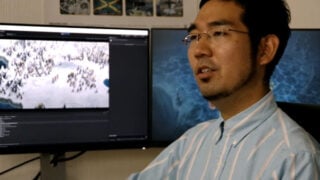
Square Enix has released the second in its series of videos where the development team behind I am Setsuna at Tokyo RPG Factory answers fan questions.
If you missed it, catch the first video here.
The second video features art director Jun Suzuki, director Atsushi Hashimoto, and English and PC versions director Usuke Kumagai, who discuss the game’s setting, lack of feet, OST, and influences.
I am Setsuna is available now for PlayStation 4 and PC. A PS Vita version is also available in Japan.
Get the video and transcript below.
Why did you choose to limit the environment type to a snowy, mountainous terrain?
Suzuki: “The snowy vistas were a way to express one of our most important themes for this game, that of melancholy. We felt that we could convey this uniquely Japanese emotional expression of melancholy through the visual aspects of the game too, by carefully framing all the snowy and icy vistas, such as snow covered forests or frozen caverns etc. One of the reasons that there is a lot of mountainous scenery is because we aimed to show how tough and harrowing Setsuna and her companions’ journey is through the steep and unforgiving mountain terrain.”
Why don’t the characters have feet?
Suzuki: “I see. That is a great question. In order to convert the really distinctive characters that illustrator toi8 designed for I am Setsuna into 3D, we shortened the body proportions to deform them, but still wanted to give these 3D characters their own distinctive features. The main reason that the character silhouettes are distinctive is due to their lack of feet, and one of the reasons we decided to cut the feet is because they would be buried under the snow cover and not visible in most of the scenes in the game.”
What made you decide to make this OST piano-only? (besides the battle themes)?
Hashimoto: “When we were thinking what kind of music would work to convey our core concept of melancholy, we decided that piano only instrumental tracks would be a good fit. In addition, the piano is an instrument that everybody is familiar with, so by using it’s familiar sound we felt that we would be able to convey the emotions we were trying to create to people from all over the world, regardless of language barriers.”
I am Setsuna has an undertone of Chrono Trigger in it that makes long-time JRPG fans like me smile while playing it. Other than Chrono Trigger, which other classic JRPG titles would you consider as critically influential for you as developers and artists?
Kumagai: “The staff at Tokyo RPG factory have been greatly influenced by series like Dragon Quest and Final Fantasy as well as SaGa, Xenogears, The Legend of Zelda, and Mother.”